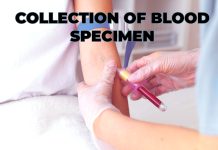Hematology MCQs: Chapter 5
What is the term for the process by which blood cells move out of the bloodstream into surrounding tissues?
What is the term for the process of white blood cells engulfing and digesting foreign particles, such as bacteria?
Which of the following is a condition characterized by an excessive production of platelets, leading to an increased risk of clotting?
What is the term for the process of red blood cell production?
What is the term for the process of blood cell formation?
Which condition is characterized by the excessive production of red blood cells, leading to thickened blood?
What is the term for the liquid component of blood that contains water, electrolytes, and proteins
Which clotting factor is essential for the formation of fibrin, the protein that forms the mesh of a blood clot?
What is the primary function of neutrophils in the immune system?
Which white blood cell type is responsible for producing antibodies?
Which blood cell type is responsible for carrying oxygen and carbon dioxide in the bloodstream?
Which of the following is a genetic condition that affects the shape of red blood cells, leading to blockages and pain crises?
Which white blood cell type is primarily responsible for the production of antibodies during an immune response?
What is the term for the process of breaking down a blood clot?
Which blood cell type is involved in the body's immune memory and antibody production?
What is the term for the process of breaking down hemoglobin into its component parts, including iron and heme?
Which type of anemia is characterized by the destruction of red blood cells at a faster rate than they can be produced?
Which blood cell type is responsible for initiating the formation of blood clots?
Which laboratory test measures the percentage of red blood cells in a blood sample?
Which type of anemia is caused by a deficiency of vitamin B12 or folic acid?
What is the term for the liquid portion of the blood after it has clotted and the clotting factors have been removed?
What is the term for the process of stopping bleeding by forming a stable blood clot?
Which of the following is a blood clot that forms inside a blood vessel and remains at the site of formation?
Which white blood cell type releases histamine and heparin during allergic reactions?
Which of the following is a condition characterized by a low level of hemoglobin in the blood, often due to iron deficiency?
Which of the following is a genetic disorder that results in the formation of abnormal hemoglobin, causing red blood cells to become misshapen and break down easily?
Which of the following is a condition characterized by an excess of iron in the body, leading to organ damage?
What is the medical term for an abnormally low level of all types of blood cells (red blood cells, white blood cells, and platelets)?
Which of the following is a blood clot that has traveled from its original site and is blocking a blood vessel in another part of the body?
Which clotting factor is deficient in individuals with hemophilia B?
Complete the form below to see results
Hematology MCQs: Chapter 5
You got {{userScore}} out of {{maxScore}} correct
{{title}}
{{image}}
{{content}}



















































I am interested